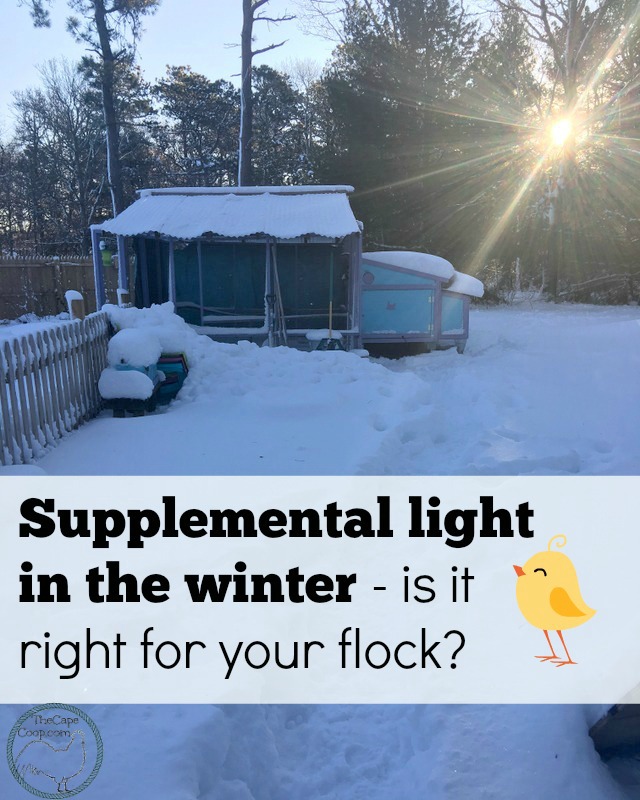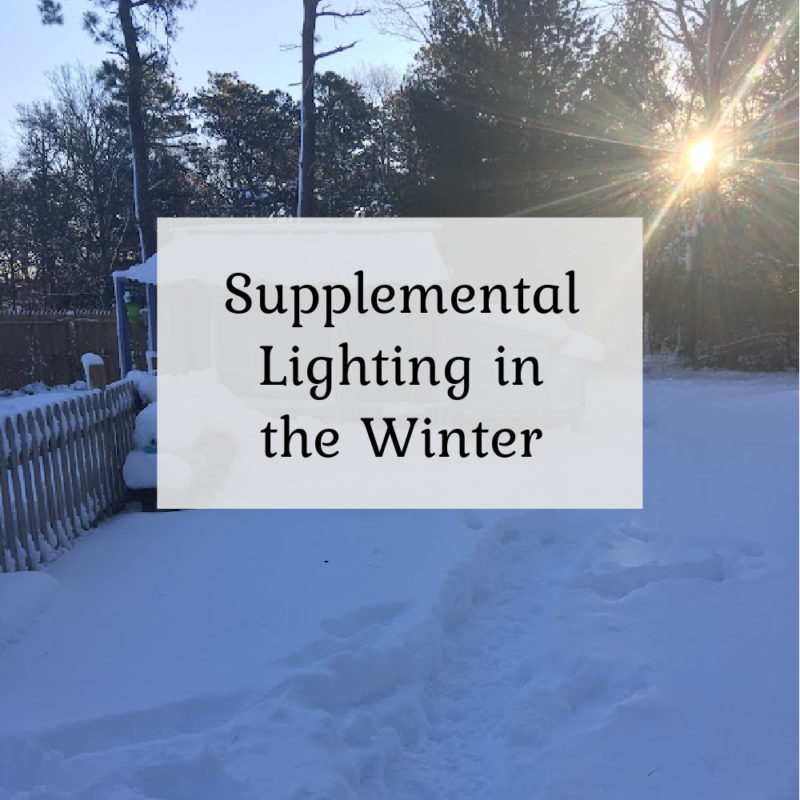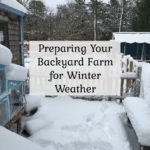---------------------------------------------------------
Fall on the homestead is a transition season. For the most part the garden has been put to bed, the harvest canned and stored. Just like your garden harvest, you will notice your egg harvest vastly decreases as we come to the end of “egg season”.
In our modern world with 24 hour grocery stores we are used to being able to get whatever we want, whenever we want it. Want ripe strawberries with your Christmas dinner? Of course! Want some juicy watermelon in the middle of January? No problem! With the easy availability of food many of us have forgotten that farm fresh harvests – and that includes animal products like eggs and milk – have seasons of bounty and seasons of rest.

A Hen’s Annual Reproductive Cycle
To understand egg season, you need to learn a little bit about your chicken’s anatomy. A hen’s egg laying reproductive cycle is controlled by the pituitary gland. This is located by her eyes, just beneath the thin wall of her skull. The skull is so thin that light can penetrate it, stimulating the gland below.
A chicken can be blind, but it can still “see” how long or short the days are. The pituitary gland needs 14-16 hours of daylight stored before it will signal to the ovaries to release an egg.
In the fall, when the days start to get shorter, egg production will slow down or even stop all together. The chicken will molt all her old feathers, regrowing clean, strong new ones, helping prepare her for winter. Renewing and replacing her feathers is exhausting work. Feathers are made of 85% protein and growing new feathers uses up most of the hen’s reserve energy stores.
Luckily for the hen after she goes through molting (which usually takes at least a few weeks), the days have gotten even shorter so she won’t be producing many eggs. The hen can now use the short winter days to rest, rebuild her protein & calcium stores and focus her energy on gaining a little weight to help keep warm over the coming winter.
As a backyard chicken keeper, when the days get to about 12 hours I start to see the egg basket is getting noticeably lighter. Here in New England, that is around the middle of September.
On the winter solstice, the day gets as short as only 9 hours of daylight. So it would take two days for a young, healthy hen to produce an egg at that time. Some of my older girls can go weeks in the winter without an egg. I am lucky to find 1-2 eggs from my flock some winter days.
By the middle of March we are back up to 12 hours of daylight and production is really getting back up to full steam. Strictly re-productively speaking, the winter is not a great time to be raising baby chicks. They need warm temperatures to survive, so there really is no biological need for the hen to be laying daily eggs.
When spring comes and warm, chick rearing weather returns the hen is well rested, physically fit, and ready to get back to the job of laying eggs and raising babies. Honestly, the sophistication of nature leaves me in awe sometimes!

Modern Solution to an Age Old Problem
So now what? You have a flock of free loaders living in your yard all winter? They still need to be fed, you have to try to keep their water from freezing all winter, you have to clean their poop, clean the coop, keep them safe during storms, shovel paths in the snow for them …..keeping chickens in winter can be quite challenging and you don’t even have tasty eggs to show for all your hard work.
But there is a way to keep those eggs flowing all winter. You can trick the chickens into thinking the days are longer by adding a light bulb in their coop simulating an earlier sunrise. You can use a low watt light bulb, rope lights, Christmas lights, even a night light depending on the size of your coop.
Most people that do this will set the light on a timer that will need to be periodically adjusted as the day length changes. For instance, today is November 22. A quick, online search tells me the sunrise is 6:40 AM and sunset is 4:17 PM for about 9 1/2 hours of daylight. I would need to trick my chickens into thinking the sunrise is actually around 2:00 AM by lighting up their coop.
Why doesn’t everyone light their coops? Obviously, all commercial egg farms use supplemental lighting. They can’t afford to give their chickens the winter off. There are a couple things to consider before adding lights to your coop.
The first, and possibly most important, factor is that putting an unattended light in a wooden coop full of dust, dry straw, shavings and erratic animals can be a fire hazard. A fire in your coop not only has disastrous, deadly consequences for your chickens and the investment you made in your coop, but if the fire spreads to your house or neighbor’s house it could put human lives in danger. No eggs are worth that. If you choose to add a light, be sure to check the cords frequently and have the wiring installed by a professional.
If the chickens accidentally break the bulb, the shards of glass could cut their feet or throat if they try to eat them. You should have protective metal caging around bulbs.
Not giving your chickens the winter off can be stressful on their reproductive system, be sure you are feeding them a high quality feed. There is some evidence that year long egg laying can lead to higher rates of ovarian cancer, reproductive issues (like prolapsed vents) and generally lowered immunity so it is important to feed them well.

Dos & Don’ts of Supplemental Lighting
*Do have the lighting system installed by a professional. Inspect the wires regularly
*Don’t leave the bulb exposed, put a wire cage around it to protect the bulb from flapping wings and sharp beaks
*Do ensure you supplement your chicken’s feed during molt with higher protein snacks, and provide calcium rich oyster shells & high quality feed year round
*Don’t use a heat bulb which have the highest risk of fire dangers, just a regular 40 watt incandescent bulb is fine
*Don’t suddenly stop using the light mid winter. The sudden short days will cause your girls to molt which is NOT what you want during the winter!
*Do gradually increase the time the light is on, don’t just start out adding 3 hours in one day. Aim for increasing about 30 minutes per week
*Don’t add the light to the nighttime hours. Chickens can not see in the dark, if the lights are on and then suddenly everything is dark, they won’t be able to find a place to roost for the night, there will be lots of confusion and stress
*Do use a timer so the “day light” hours are consistent
*Don’t allow the light to be on all the time. Chickens need some “dark hours” to rest, and it helps build a healthy immune system & makes them less stressed
*Don’t start supplementing light until the flock has molted in the fall. Annual molting is important for their health, if you give them constant, year round long days their bodies will never get the signal to molt. Even large egg farms give their chickens time to molt.
What to do if you don’t supplement light
Eat less eggs – during the summer we eat eggs several times a week but in the winter it’s mostly just eggs for cooking or baking and maybe breakfast once a week.
Bite the bullet and buy eggs – I know it’s awful, but the way I look at it, my house pets don’t contribute to the household at all and I still feed them so I can feed my freeloading chickens for a couple months too
Add ducks to your farm – ducks can be more reliable winter layers so even when your chickens are on strike you can at least have a duck egg or two
Add new chicks every spring – obviously not an option for everyone, but young 1st year layers are going to be the best winter layers
Stretch your feed budget (while giving them a bonus nutrient boost) by fermenting chicken feed (click here to learn about fermenting feed!) or growing wheat grass (click here to learn about growing wheat grass indoors!)
We have decided to let our chickens have the winter off. I don’t think there is a right or wrong answer to the the light question, it’s just a matter of personal choice but we decided if this is the way chickens are designed to work, we aren’t going to mess with it.







Tara
Saturday 24th of November 2018
Thank you this is just the information I’ve been looking for. The hubs wants to get rid of the chickens and I keep trying to tell him this is normal for winter! So much great info here!
Liz
Sunday 25th of November 2018
You are very welcome! Totally normal to slow down for winter but with or without light they will pick right back up in early spring!